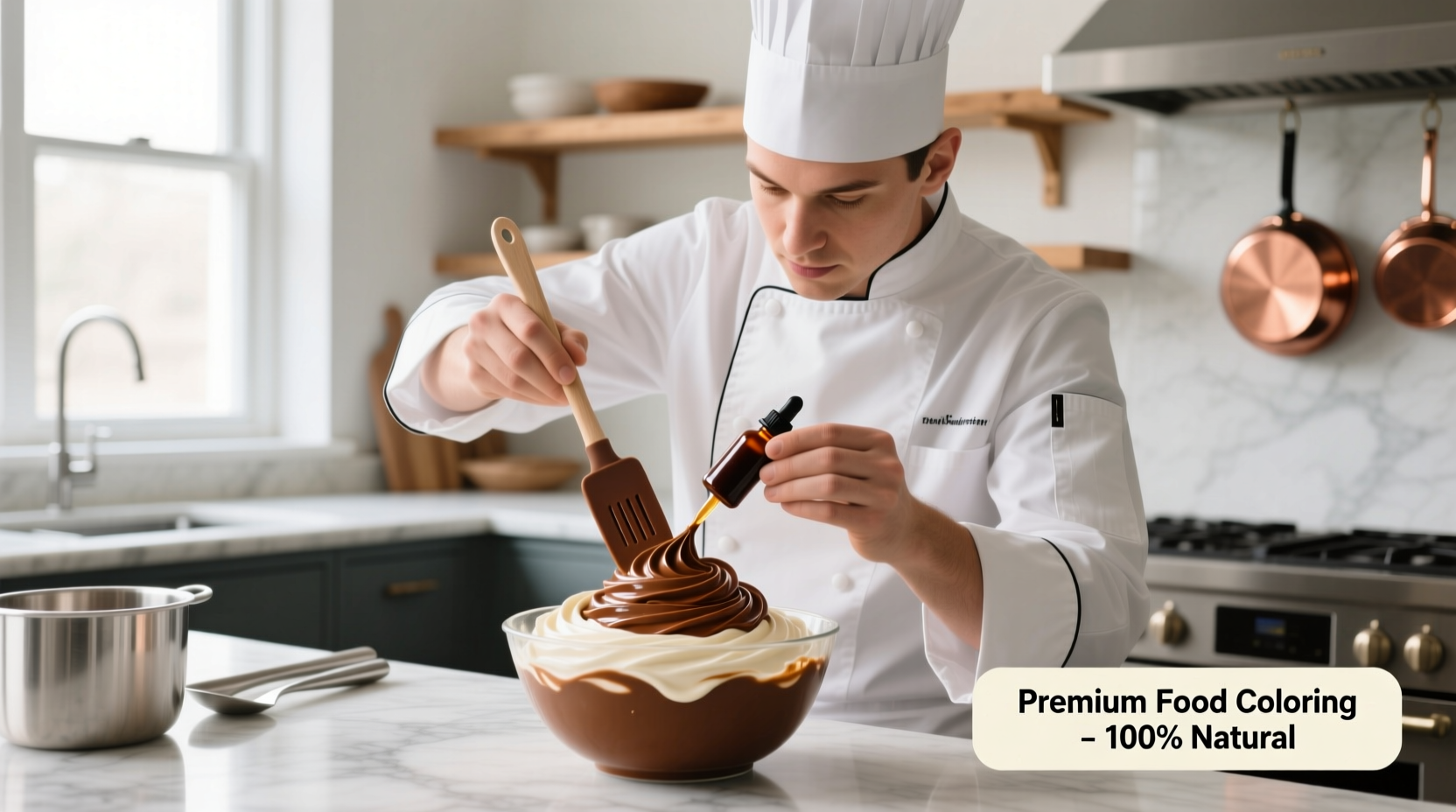The Science Behind Creating Perfect Brown Food Coloring
Unlike primary colors, brown doesn't come in a standard food coloring bottle because it's a tertiary color created through precise color mixing. Understanding color theory is essential for achieving the perfect brown shade for your culinary creations. When working with food coloring, brown emerges when you balance complementary colors that cancel out each other's vibrancy.
| Color Combination | Resulting Brown Shade | Best For |
|---|---|---|
| Red + Green (1:1) | Warm chocolate brown | Chocolate cakes, brownies |
| Red + Green + Blue (2:2:1) | Rich espresso brown | Coffee-flavored desserts |
| Red + Yellow + Blue (3:1:1) | Light caramel brown | Frosting, buttercream |
| Natural cocoa + coffee | Organic matte brown | Health-conscious baking |
Step-by-Step Brown Food Coloring Method
Follow this professional technique used by pastry chefs to create consistent brown coloring every time:
Basic Brown Recipe (Chocolate-Style)
- Start with 5 drops of red liquid food coloring in a small bowl
- Add 5 drops of green liquid food coloring
- Mix thoroughly until fully combined (should appear muddy brown)
- Add 1-2 drops of blue food coloring to deepen and neutralize
- Adjust with tiny drops of red for warmth or blue for coolness

Advanced Brown Variations for Specific Applications
Different baking applications require different brown shades. The color combination table above provides a starting point, but these specialized techniques will help you achieve perfect results:
For Buttercream Frosting
Buttercream requires more coloring than batters due to its high fat content. Use this ratio:
- 8 drops red
- 7 drops green
- 3 drops blue
- Mix into 1 cup of frosting, then adjust as needed
Natural Brown Alternatives
For those avoiding artificial dyes, these natural options create beautiful brown hues:
- Cocoa powder: 1-2 tsp per cup of batter (adds chocolate flavor)
- Instant coffee: 1 tsp dissolved in 1 tsp water (creates warm brown)
- Strongly brewed black tea: Replace liquid ingredients (subtle beige-brown)
- Activated charcoal + turmeric: For gray-brown shades (use sparingly)
Troubleshooting Common Brown Coloring Problems
Even experienced bakers encounter issues when creating brown food coloring. Here's how to fix the most common problems:
When Brown Turns Gray or Muddy
This happens when colors are over-mixed or ratios are imbalanced. Fix it by:
- Adding tiny drops of red (¼ drop at a time) to warm the color
- Using a toothpick for precise additions
- Starting over with fresh coloring if too far gone
Color Fading During Baking
Brown colors often lighten during baking. Prevent this by:
- Using gel-based food coloring instead of liquid
- Increasing concentration by 25% from your target shade
- Avoiding natural colorants for baked goods (they fade significantly)
Historical Context of Food Coloring Development
Understanding the evolution of food coloring helps explain why brown isn't commonly sold as a single color:
1856: First synthetic food dyes created from coal tar by William Perkin
1906: Pure Food and Drug Act regulated food additives in the US
1938: FDA began requiring certification for synthetic color additives
1960s: Primary color system (red, blue, yellow) became industry standard
Present: Professional bakers still mix custom browns as needed
According to the U.S. Food and Drug Administration, food manufacturers must list all color additives individually, which explains why pre-mixed brown isn't commonly sold—it would require listing multiple certified colors in a single product.
Pro Tips for Perfect Brown Every Time
- Mix coloring in a white bowl for accurate shade assessment
- Let colored batter rest for 10 minutes—colors often deepen slightly
- For realistic meat coloring (vegan dishes), add a tiny drop of purple
- Store unused coloring in airtight containers away from light
- Keep a color mixing journal with your successful combinations
When to Choose Natural vs. Artificial Coloring
Understanding the limitations of each approach prevents baking disasters:
Natural Coloring Works Best When:
- You're making chocolate-flavored items (cocoa enhances flavor)
- Color intensity isn't critical (natural colors are subtler)
- Creating items that won't be baked (frosting, puddings)
- Catering to health-conscious consumers
Artificial Coloring Works Best When:
- You need precise, vibrant colors
- Creating baked goods (colors hold up better)
- Matching specific brand colors
- Working with white or light-colored batters











 浙公网安备
33010002000092号
浙公网安备
33010002000092号 浙B2-20120091-4
浙B2-20120091-4